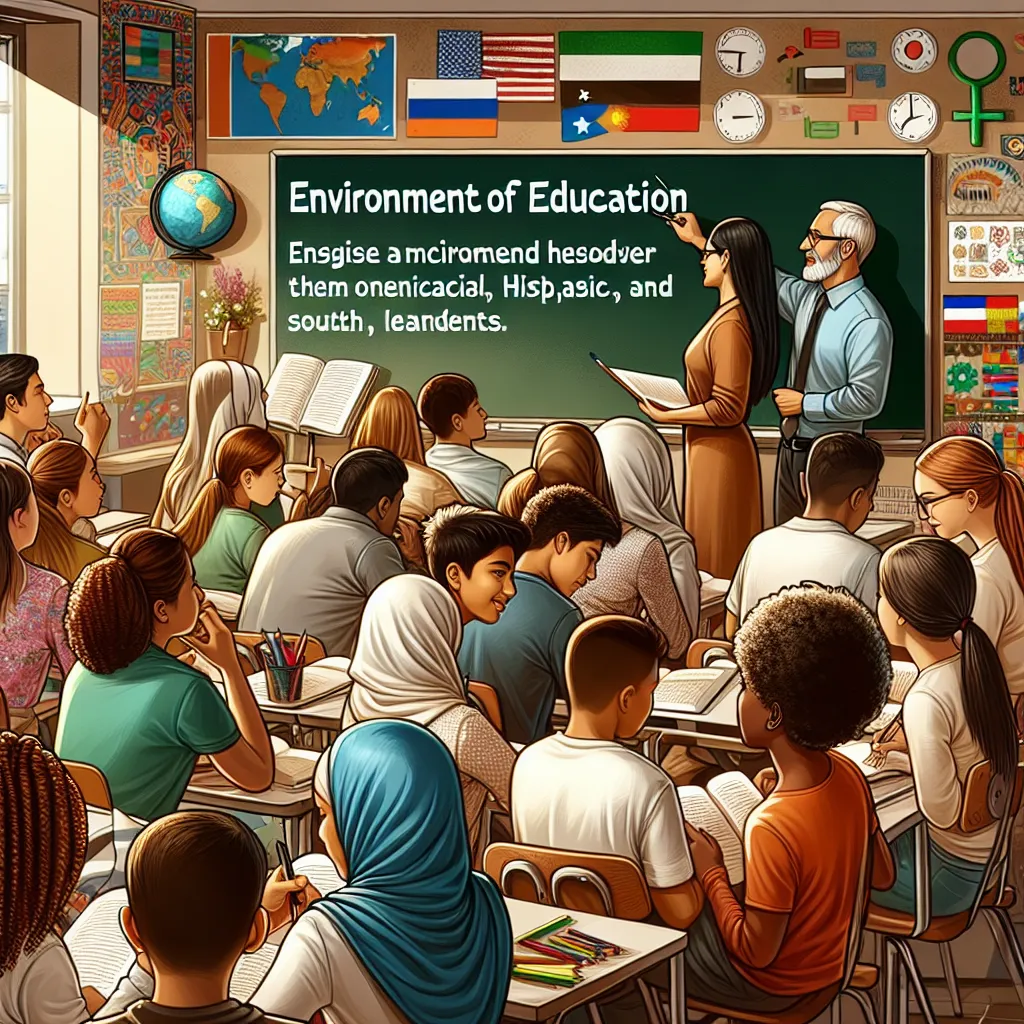Ask AI on The Internet
Question: Question 1 1.1 As the coordinator of the school-based support team in your school, provide a detailed explanation of inclusive pedagogy to a newly appointed teacher. [5] 1.2 How does inclusive pedagogy address the needs of learners who are vulnerable to exclusion or marginalisation? Provide specific examples. [5] 1.3 Discuss 5 potential benefits of implementing inclusive pedagogy in a school setting, both academically (3) and socially. (2) [5] Subtotal: [15] Question 2 Pinelands North Primary School, Cape Town "Caught in the act … of being good!" Throughout the school, teachers, staff and visitors are encouraged to acknowledge good behaviour. To facilitate this, the school has "Caught in the act … of being good!" slips that can be filled with the learner's name, the details and date, and handed in at the office. Just before break, the principal reads them out over the intercom and a note is sent home. It has shifted the focus from constantly looking out for bad behaviour to actively seeking out good behaviour. It has caught on to such an extent that even people in the community responded. A woman was shopping at the nearby Spar supermarket and a Pinelands North Primary learner offered to take her grocery bags to her car. She went to the school and filled out a "Caught in the act …. of being good!" slip! INC3701/103/2024 7 2.1 Evaluate the impact of the "Caught in the act … of being good!" initiative on the school's culture. How does it influence the behaviour of both learners and the broader community? [5] 2.2 Analyse the role of positive reinforcement in fostering a school environment that promotes good behaviour. How does the system of "Caught in the act … of being good!" slips contribute to this positive reinforcement? [5] 2.3 Examine the potential long-term effects of the "Caught in the act … of being good!" initiative on the school's overall climate. How might this approach impact learner's motivation, community engagement and the school's reputation over time? [5] Subtotal: [15] Question 3 Differentiated assessment will enable learners of various abilities and with varied experiences to best demonstrate what they know. It involves rethinking the traditional practice of having all learners do the same assessment tasks at the same time and in the same way. The goal is to meet learners where they are and help them progress to the next step in their learning. Thus, it is a cyclical process where assessment and instruction inform each other. 3.1 Discuss how differentiated assessment challenges the traditional approach of uniform assessment tasks for all learners. [5] 3.2 How do we differentiate our assessments to give every learner the chance to illustrate what they have learnt? Give one example. [5] 3.3 Explain the cyclical nature of the relationship between assessment and instruction in differentiated assessment. How do they inform each other? [4] 3.4 Why do teachers use Bloom's Taxonomy in the classroom? Give 6 reasons. [6] Subtotal: [20]
**Question 1** **1.1 Explanation of Inclusive Pedagogy to a Newly Appointed Teacher** Inclusive pedagogy is an approach to teaching that recognizes and values the diverse backgrounds, learning styles, and needs of all students within a classroom. It aims to create an environment where all students feel welcomed, supported, and able to succeed. This approach involves differentiating instruction, using a variety of teaching methods, and ensuring that all students have access to the same opportunities for learning. It emphasizes the importance of adapting the curriculum and learning activities to meet the needs of all learners rather than expecting all students to conform to a single way of learning. Inclusive pedagogy also includes fostering a positive classroom culture where differences are respected and celebrated, and where each student’s unique contributions are valued. **1.2 Addressing the Needs of Vulnerable Learners through Inclusive Pedagogy** Inclusive pedagogy addresses the needs of vulnerable learners by: 1. Differentiating instruction: Tailoring lessons to meet different learning styles and abilities. For instance, providing visual aids for learners with reading difficulties. 2. Creating a supportive environment: Establishing a classroom culture that is safe and encouraging, so that all students feel comfortable participating. 3. Providing additional resources: Making available extra materials or support staff to assist learners who need it, such as having a teaching assistant work with a student who has special educational needs. 4. Ensuring accessibility: Modifying physical spaces and learning materials to be accessible for all students, such as using ramps for those with mobility impairments or offering text-to-speech software. 5. Encouraging peer support: Promoting collaborative learning where students can support each other, for example, through group projects where students of varying abilities work together. **1.3 Potential Benefits of Implementing Inclusive Pedagogy** **Academic Benefits:** 1. Improved Engagement: When teaching methods cater to various learning styles, students are more engaged and interested in the subject matter. 2. Better Performance: Students often perform better academically when they receive instruction that meets their individual needs. 3. Decreased Achievement Gaps: Inclusive pedagogy can help close the achievement gaps between different groups of students by providing support tailored to those who need it. **Social Benefits:** 1. Enhanced Social Skills: Inclusive classrooms encourage interaction among diverse groups of students, which can improve their social skills and understanding of different perspectives. 2. Stronger Community: A culture of inclusion fosters respect and empathy among students, leading to a more cohesive and supportive school community. **Question 2** **2.1 Impact of "Caught in the act ... of being good!" Initiative** The "Caught in the act ... of being good!" initiative positively influences the school's culture by emphasizing and rewarding positive behaviors rather than focusing on misbehavior. It shifts the paradigm from a punitive to a positive reinforcement model, encouraging students to act in ways that align with the school's values. This not only enhances the behavior of the learners but also fosters a more positive and supportive community where students feel appreciated. The involvement of the broader community, as seen in the Spar supermarket incident, strengthens the bond between the school and its surroundings, creating a culture where positive behavior is recognized and valued both inside and outside the school environment. **2.2 Role of Positive Reinforcement in Fostering Good Behavior** Positive reinforcement is a powerful tool in promoting good behavior as it encourages the repetition of desirable actions by rewarding them. The "Caught in the act ... of being good!" slips serve as a tangible form of recognition for students' positive actions. When students see that their good behavior is acknowledged, they are more likely to repeat those actions. This recognition can also motivate others to behave positively, as they seek similar acknowledgment. By consistently applying positive reinforcement, the school environment becomes one where good behavior is the norm and students feel incentivized to contribute positively to the school community. **2.3 Potential Long-term Effects on the School's Overall Climate** Over time, the "Caught in the act ... of being good!" initiative can have several long-term positive impacts: - **Learner's Motivation:** Continuous positive reinforcement can build intrinsic motivation in students to behave well, as they associate good behavior with positive outcomes. - **Community Engagement:** As the community sees the positive impact of the initiative, they are more likely to engage with and support the school, leading to stronger school-community ties. - **School's Reputation:** A school known for its positive climate and proactive behavior management is likely to attract more students and gain a favorable reputation, which can lead to increased enrollment and community support. **Question 3** **3.1 Challenges of Differentiated Assessment** Differentiated assessment challenges traditional uniform assessment by acknowledging that students have varied learning styles, strengths, and needs. Traditional assessments often measure all students against the same standards, which can be unfair and unreflective of individual capabilities. Differentiated assessment, however, allows students to demonstrate their understanding and skills in ways that suit their personal strengths. For example, one student may demonstrate understanding through a written essay, while another may do so through a project or presentation. This approach requires teachers to be flexible and creative in designing assessments but ultimately leads to a more accurate representation of each student’s abilities. **3.2 Example of Differentiated Assessment** To differentiate assessments, teachers can offer various formats for students to demonstrate their knowledge. For example, in a history class, instead of having all students write an essay on a historical event, a teacher might allow students to choose from writing an essay, creating a visual timeline, performing a skit, or producing a video documentary. Each option requires the same level of content understanding but allows students to select the format that best suits their learning style and strengths. **3.3 Cyclical Nature of Assessment and Instruction** The relationship between assessment and instruction in differentiated assessment is cyclical because ongoing assessments inform instructional strategies and vice versa. - **Assessment informs Instruction:** Teachers use the results of assessments to understand where each student is in their learning journey, which helps tailor future instruction to address any identified gaps or strengths. - **Instruction informs Assessment:** As teachers implement differentiated instruction, they continuously gather data on student progress, which informs subsequent assessments. This iterative process ensures that teaching and assessing are aligned and responsive to learners' needs. **3.4 Reasons for Using Bloom's Taxonomy in the Classroom** 1. **Structured Learning:** Provides a clear framework for educators to organize objectives and learning outcomes. 2. **Depth of Knowledge:** Encourages the development of higher-order thinking skills beyond mere recall of facts. 3. **Clear Expectations:** Helps students understand the levels of understanding and engagement expected from them. 4. **Curriculum Planning:** Assists in designing curriculum that progresses from simple to complex tasks, ensuring a comprehensive learning experience. 5. **Differentiated Instruction:** Enables teachers to create varied learning activities that cater to different levels of cognitive ability. 6. **Assessment Design:** Guides the formulation of assessments that evaluate a range of cognitive skills from basic knowledge to critical thinking. Each of these reasons emphasizes inclusive, comprehensive, and differentiated approaches to education, aligning well with inclusive pedagogy and differentiated assessment principles.
Think your answer is better than the AI's? Post it below.
Other Most Relevant Posts:
 # Tutorial Letter: Assignment 05 - Incl. Education Approaches (IEA1501)
# Declaration of Honesty
# Assignment 05 Questions
# Inclusive Pedagogical Approaches
# Teaching Strategies for Incl. E
# Tutorial Letter: Assignment 05 - Incl. Education Approaches (IEA1501)
# Declaration of Honesty
# Assignment 05 Questions
# Inclusive Pedagogical Approaches
# Teaching Strategies for Incl. E
 ### 1
1. Inclusive Education
2. Transformative Teacher
3. Special School
4. Barriers to Learning
5. Social Isolation
### 2
1. Assessing Individual Needs
2. Promoting Collaborative Learning
3.
### 1
1. Inclusive Education
2. Transformative Teacher
3. Special School
4. Barriers to Learning
5. Social Isolation
### 2
1. Assessing Individual Needs
2. Promoting Collaborative Learning
3.
Question Tags
If you want your question answered by an AI, click here.





Post your own comment: